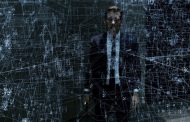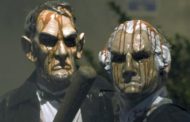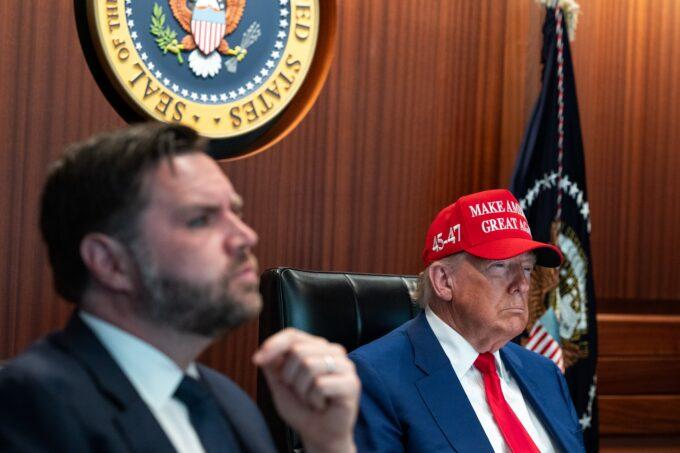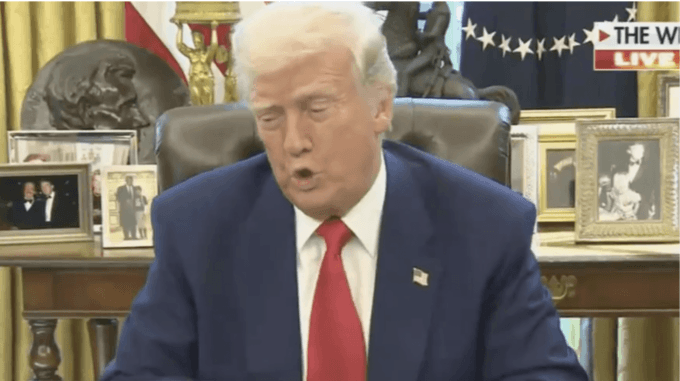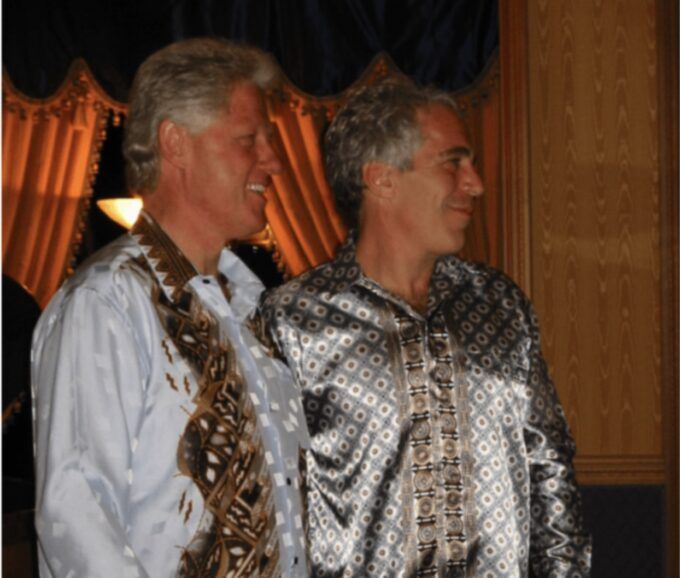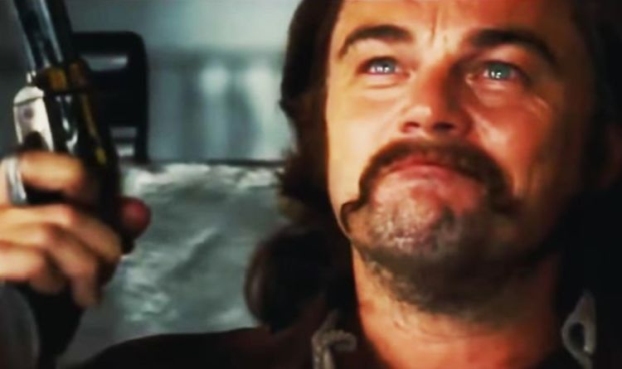
Once Upon a Time
Published on http://www.brightlightsfilm.com
“Hey, you’re Rick fucking Dalton. Don’t you forget it.” – Once Upon a Time – in Hollywood
“And so art is everywhere, since artifice is at the very heart of reality.” – Jean Baudrillard
* * *
The same weekend in which there were four scenes of shootings in the U.S., I went to see Quentin Tarantino’s new film, Once Upon a Time – in Hollywood. One real, the other hyperreal. And yet there’s a hyperreality to the shootings and an everyday reality to the movie.
In a first calculation, the shootings are horrific/shocking/frightening beyond any real understanding. They are loaded with an incomprehensible hyperreal dimension. Tarantino’s movie is, on that same, first-approach level, very everyday real stylistically for four-fifths of its 2:45 running time, and then we get a Tarantino take of what was real and yet hyperreal violence in 1969 – the Manson family on the night of its killing spree.
In a deeper calculation, what we can see is that there’s a disturbing mixture of the real and hyperreal in the Walmart, Dayton bar, and garlic festival shootings. Shopping, beers, and garlic festival– the everyday real. Similarly, the whole ambience of 1969 Hollywood on-set and off-set life, Hollywood boulevard cruising, life on the fringe of acting and stunt work, up on the roof fixing a TV antenna is full of jumps to the cinematic reel footage of former Western TV star Rick Dalton’s episodes in the limelight. The everyday real is already interrupted before the Manson family violence scene with this comical hyperreal footage, from Dalton doing the twist to flamethrowing Hitler’s Bund.
Intermingled with common life pitfalls, traumas, fears, and frustrations, namely an acting career heading toward oblivion, are the confusions of melding a shaky everyday life and identity with a collapsing TV hyperreal identity. Rick Dalton is a TV hero of a “once upon a time” West that never was real in any way shown in any movie or TV episode. Whatever the reality of Rick Dalton may have been, it has slipped into simulacra. And the slippage from that to a Has-Been reality evokes dread, fear, and trembling. There’s pain in hearing: “Hey, you’re Rick fucking Dalton. Don’t you forget it.” If he was someone other than the Hollywood “Rick Dalton,” that someone is forgotten, and tragically what happens to a has-been is that he does become forgotten.
Clint Booth – stuntman, friend, sidekick, and gofer – is neither entering nor leaving the hyperreal but more than literally on the roof fixing the TV antennae and looking around. He’s into the flux of real time, fixed in everyday life, in time and reality off the Hollywood set, off the set of the hyperreal. He makes a dent in the hyperreal – literally a dent in a car he has thrown Mike Moh as Bruce Lee into. The action also stands as a dent in the Bruce Lee legend, a legend in which the difficulties Lee faced as an “oriental” star within Hollywood’s long tradition of giving Asian parts to Caucasians has been glossed over with the hyperreal. Here in Tarantino’s film, Bruce Lee is a reality, a man who in 1969, four years before his death, is still going through dark battles in the hyperreal. “Bruce Lee” is a hyperreal identity, like “Rick Dalton,” and Tarantino plays him against that identity. Ironically, the fight scene with Bruce and Clint in this “once upon a time” world touches the grounds of the real, and yet we resist that and hold the portrayal to be false and disrespectful of the mystique the hyperreal creates and we find ourselves living within.

In the scene at the Spahn Movie Ranch, Clint Booth barges into the hyperreal on a quest to establish one real thing, to answer one real question: Is his former acquaintance George still alive? He doesn’t know that this is the place where Manson has settled his communal followers, tripping on nothing more than his madness, but Clint cuts through it like a restraining orderly in an asylum. His is a hyperreal immunity, a dog-loving, quiet force who makes a living in the hyperreal but isn’t of it. In his second and final encounter with mayhem-seeking Mansonites, Clint and his dog, Brandy, rip through this mess once again, resisting and crushing an invasion of an everyday reality by the distortions of the hyperreal.
When you’re in the hyperreal, you lose touch with the real, but you don’t get away without injury. Rick Dalton is not at an equilibrium point where Clint is; rather, he is at the edge of breakdown the entire film. It’s comical/sad but rather more hyperinflated as all things in Hollywood must be to give ticket buyers a sense that they are escaping the humdrum real. No one goes to the movies to see their own deflated lives. Not only lives but everything around us must be cast in a hyperreal setting, a surround that Tarantino captures in such extended, minute detail because the appearance of this time and place doesn’t stay outside. That outside impresses itself in our minds, shapes thoughts and feelings so deeply that there is no boundary between us and the world. And because there is so much simulacra all around us, the simulacra – like plastic bags, with which we are filling our world – also goes inside. It’s that we do not escape.
Viewers are filtered by the surround of the film, but in the film itself, characters are filtered by the 1969 world they are in while that world comes into being through the characters. Each is dispersed into the other, and so there is no character without world, no world without character. Indeed, a human life world is what we humans make of this third planet in our solar system within the Orion Arm of the Milky Way. Such “worlding” is what we humans alone do, and some of it is real – that is, correspondent with what is – and some hyperreal. In Tarantino’s films, we walk or drive through both, as the characters do.
 Sharon Tate, the “rising star” at the threshold of entering a hyperreal image of herself, strolls through Hollywood in the white plastic boots of ’69, shopping, browsing, going into the Bruin Theatre in Westwood, dancing wildly at the Playboy mansion, cruising around with Roman Polanski. Clint Booth drives the 1966 Cadillac DeVille leisurely through Westwood, down Hollywood Boulevard, and then drives his own Karmann Ghia in a fast-driving lengthy shot heading to his mobile home behind the Van Nuys Drive-In playing Lady in Cement. What we are getting here is the pulse of real time and place, both essentially different than the hyperreal.
Sharon Tate, the “rising star” at the threshold of entering a hyperreal image of herself, strolls through Hollywood in the white plastic boots of ’69, shopping, browsing, going into the Bruin Theatre in Westwood, dancing wildly at the Playboy mansion, cruising around with Roman Polanski. Clint Booth drives the 1966 Cadillac DeVille leisurely through Westwood, down Hollywood Boulevard, and then drives his own Karmann Ghia in a fast-driving lengthy shot heading to his mobile home behind the Van Nuys Drive-In playing Lady in Cement. What we are getting here is the pulse of real time and place, both essentially different than the hyperreal.
But we conventionally hold reality and time to a non-Tarantino standard, by which I mean that he is, firstly, ignoring what authorities have established as real accounts, and, secondly, playing the everyday real into the hyperreal. His standard is to be at play with history, most clearly seen in Django Unchained, Inglourious Basterds, and The Hateful Eight. And in this, Tarantino films at the core of our post-truth whirlwind. What happens in time is less subject now to what such authorities say and more subject to our personal passions, our personal knowing. We live at a time when both time and reality are subject to what we euphemistically call our freedom to choose but are in truth merely our private passions that we now have the freedom to release in cyberspace. Or at the end of an automatic weapon.
In 1969 and throughout the ’60s, the mantras of a self-empowering personal choice, of “doing your own thing,” of choosing what you wanted in ways that could not be discounted by the Establishment have lingered in the American mass psyche. They have done so because this hippie spirit melds nicely into a background of a fierce American spirit of individualism, of living free of any hierarchies; in the beginning, those of Europe, but in 1969, any authority that challenges “my own intuition.” This is an individualism that also, paradoxically, imagines all the people coming together, living in peace, an unthought, blind search for communality that Charles Manson could evoke as easily as Herbert Marcuse. Mad, hyperreal communes are more likely to occur in the hyperreal than ethical or utopian socialisms.
Tarantino is not of that moment, either of Hollywood or hippiedom, but he shares their spirit in the same way all Americans are awash in the illusions of personal autonomy, of personal choices checkmating reality. But while we feel that every story told around us, everything that comprises the mise en scène of our lives, really doesn’t permeate the inner core of our reality, Tarantino shows us that what is outside fashions what is inside, that our “personal” is always a product of the stage set. He is personal and subjectivist in this approach to time and reality, but for him, the personal is immersed within both, not above or beyond. His vision is caught within time and place and his characters are also. This is a filmmaking technique but also an epistemology and an ontology.
We are infiltrated by Hollywood dialogue, by Madison Avenue jingles, by brand signage, by TV reruns, by car, cigar, wine, beer, food, sports erudition, the flotsam the hyperreal makes of reality. Who you are is when and where you are. There is no “you” outside a set. In a world that has become increasingly hyperreal, it’s a Hollywood set, a fabrication, a “once upon a time” set. Time and reality are back projections to our lives and our lives our back projections to time and reality.

This is the iconoclastic spirit we see in all Tarantino’s movies. He’s in free play with time and reality, but he also conveys to us the sense that time and reality are at play with us. Not all or very much of what he represents as Hollywood 1969 can pass a fact check, but what remains true is that the setting is as much a protagonist as Clint and Rick are. On a simple level, it’s a sentimentality and nostalgia, a sensibility drawn to characters in a certain world and time frame, though one he is not objectivist about in any way. On a more complex level, which we always deny Tarantino’s movies, his are always portrayals of being-in-the world and therefore ontological. And because he is careless with known historical accounts and his reality is a Tarantino reality – that is, playful, violent, fetishy stylized in speech and character – we overlook the value of his work in helping us understand how our hyperreality works. Including the violent and their violence. Including the contributions to the hyperreal our president is now making.
In short, viewing a Tarantino movie is a heuristic experience, one that offers a way to see into the dark matter of now.
We have a bipartisan understanding that President Trump prefers his own understanding of reality to any other and that the power he has to assert that understanding has already created his own “once uon a time” story in which we are all living. His “understanding” is not empirically or rationally verifiable, but is indeed his own Tarantino kind of understanding. Both measure and shape the world to their own dimensions. However, while world is always a constructing force that characters are immersed within in Tarantino’s movies, world – that is, time and reality – is in President Trump replaced by ego, by an amour de soi that cannot be breached by time and reality.

Public domain photo of Donald Trump, 2017. Courtesy of Wikimedia Commons.
The power of personal will is strong in the president, and the power he has to assert it is strong. Ironically, although no choices other than his own matter he holds the choices of others to account as if they were efficacious, although he denies their effect on him. In this conundrum, he represents a way of being that is not his alone. We want to hold others to standards of accountability, hold their choices to consequences while at the same time denying the existence of any authority that can hold our choices to account. We live now on the threshold of both a quickly vanishing reality and a quickly emerging, totalizing hyperreality.
The hyperreal saturates all minds, although ironically, once again, we hold our minds to be unsaturated by anything not personally chosen by us. Everything, therefore, must be a personal act without attachments to time and reality. In order to keep personal control of the world, the world must be ignored. Thus, that guns in America are a part of a frontier mythos, one that Hollywood perpetuates; that a narrative of masculinity in a male-dominated society is wrapped up in guns; that there is a reason why there are no women mass shooters; that the whole country is taxed to buy weaponry; that the most popular video games are shooting guns; that our answer to guns is more guns – all this reality must be ignored.
A zero-sum, competitive economic system can have it no other way. Both chance and the shaping factors of time and the real conditions of the world cannot be allowed to overpower the illusions of personal choice and individual autonomy. This state of affairs defines a hyperreality that has been nurtured and expanded by the liberation of all personal choices in cyberspace and the probability of every personal assertion – regardless of how lunatic and fact poor – of finding confirmation and support.
What Tarantino does is show us the pulping process in which he brings the hyperreal to the screen in a way that exposes its difference from time and reality. This is a violation of the hyperreality we are in offscreen, something that should not be done if the illusions of the hyperreal are to remain, like the emperor without clothes, unobserved. Offscreen, we have pulped reality into a hyperreal that we no longer have the means to control by any commonly accepted rules of discrimination and judgment. In this situation, the hyperreal oversees and regulates itself according to its own rules, which are hyperreal, rather like allowing Boeing to decide when the Boeing 737 Max 8 is safe enough to fly.
Tarantino’s constraining the personal within time and place, his dispersal of self into the world and world into self, is instructive when we face the most startling productions of the hyperreal.

Vigil for shooting victims, Dayton, Ohio, August 5, 2019. Photo by Victor Grigas. Licensed by the photographer through Wikimedia Commons.
For instance, there has been 248 mass shootings as of this writing in 2019. There were 4 in 1969. Rather than seeing the shooters of our mass murders as multiplying as our hyperreality pans wider and wider, we see every shooter as autonomous and self-willed, as most likely, in President Trump’s view, mentally ill. The illusion held in this hyperreality that you can do whatever you wake up wanting to do, and that what you choose to do strengthens your sense of liberty and personal freedom, is no longer a derangement alert. It is, in fact, a foundational belief held in the American mass psyche.
Either deranged individuals in 1969 and before who acted irrationally had no access to guns or were confined in institutions, or the narratives of indiscriminate mass shootings didn’t fill the surround and thus had no shaping influence. By the time we get to the new millennium, people are being born into these stories routinely. They are stories evoking fear as well as, for some –already blighted in a winner/loser culture – the possibility of notoriety by killing, and killing in a gamelike way, going for the highest score.
There’s the allure of spectacle involved in this mass pathology of mass shootings but also the deep immersion of self within these stories themselves. The hyperreal is no longer innocent, like merchants of cool branding Sprite or the Baconator, and no longer a cool exuberance of sex, drugs, and rock ’n’ roll. Our hyperreal has the dark side of indiscriminate mass slaughter. The notoriety of murder magnetizes as the platforms for magnetizing invade what was previously our one dimension, our analog dimension, of reality, a hierarchically, curated space that, like Pandora’s box, once opened, once liberated, cannot be closed. The liberation needed was never one in a digital, alternative reality but in reality itself.
The notoriety of slaughter hits the print media, but its real conduit is cyberspace, its social media and its website expressions of every passion, far outweighing rational expression. There is more Manson than Milton in cyberspace. The apostles of a true democracy in cyberspace are like the apostles of conservatism, a spontaneous order of cooperating individuals in market relations, both held deep within the illusions of the hyperreal.

When you can only choose within the range of stories you are born into, what is previously inconceivable becomes conceivable only through representation. When choices are not prior to the presence of the world’s representations but subject to them, where and when we are – time and place, 1969 or now – construct choice.
Our hyperreal is now replete with what was formerly inconceivable, with representations that are indeed the Hollywood Boulevard our being drives through and lives within. We are also at once deeply ontologically on the roof with Clint fixing a TV antenna or verifying an irascible Bruce Dern’s George’s continued real existence. In Tarantino’s “once upon a time,” we may be with Clint and Rick watching reruns of TV’s hyperreal, but we are also in a real/hyperreal-infused world more cast by the everyday time and reality of our surround than the illusions of hyperreality will allow.
* * *
Unless otherwise noted, all images are screenshots from the film’s trailers.





